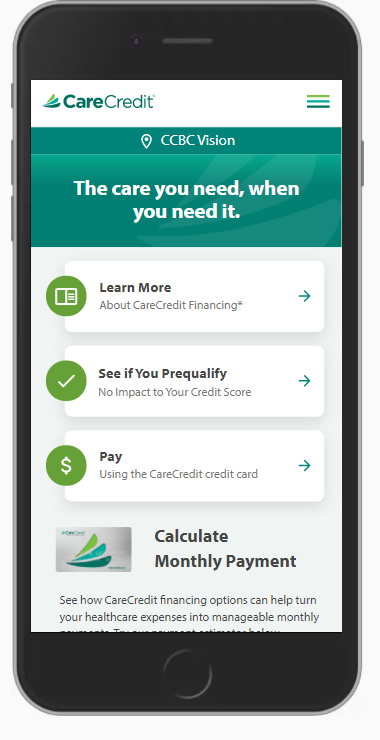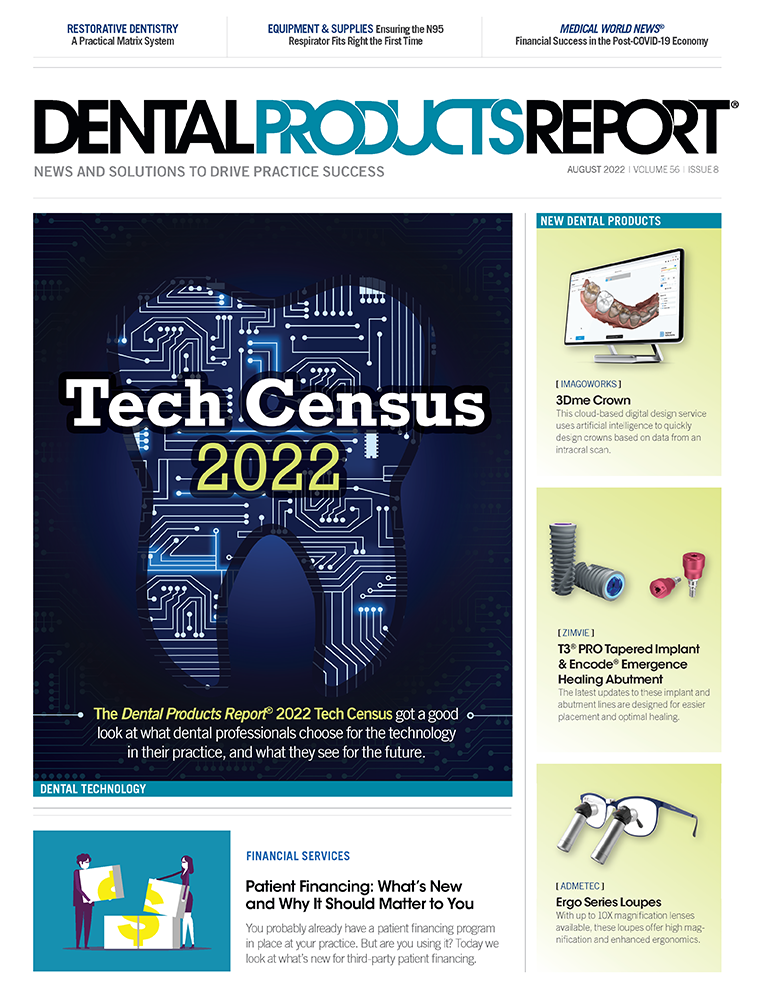Dental Patient Financing: What’s New and Why It Should Matter to You
You probably already have a patient financing program in place at your practice. But are you using it? Today we look at what’s new for third-party patient financing.
Dental Patient Financing: What’s New and Why It Should Matter to You. Photo courtesy of zorandim75/stock.adobe.com.

You probably have 1, maybe even 2 of these in place at your dental practice.
They can influence your treatment acceptance, improve your production, and increase your revenues. Perhaps most importantly, they could be the reason your patients get the treatment they need instead of the treatment they can afford.
But you probably don’t use it.
We’re talking about your patient financing program. Today, we take a look at what’s new for third-party patient financing and why it should matter to you.
Patient financing is a necessary component to your practice management strategy. Per the American Dental Association (ADA), patients postpone or do not accept treatment because they don’t have the money for it. The idea behind the patient financing plan is to give them the option to finance the treatment, so the patient feels more comfortable moving forward with the treatment plan faster. With proper management, the ADA suggests, patient financing programs make good business sense for your practice.1
“Patient financing is great, but let’s keep the term in focus,” Sameer Bhasin, MBA, MHA, Vice President Strategic Alliances at CareCredit, part of Synchrony Financial, says. “It’s patient financing and ultimately, it is for the patient and what is best for the patient.”
CareCredit Patient Financing

In 2020, the Federal Reserve did a survey about how adult Americans would respond to a small financial emergency. Only 64% of adults would be able to cover a $400 expense using cash, savings, or a credit card they paid off at the next statement in November 2020.2 In light of this, Jay Letwat, Executive Director of Business Development at Sunbit, describes the need for patient financing as tremendous, especially when you consider that the average dental treatments cost between $1,200 to $1,500, which contributes to the disconnect.
“There’s a huge chunk of people that are walking through the office door that cannot afford whatever treatment is proposed by the dentist,” Letwat says.
Most dental practices eschew internal financing programs because of the regulations and resources needed to manage them. Instead, many gravitate toward third-party financing options.
However, Forbes reports that as many as 50 percent or patients who apply for financing for out-of-pocket healthcare expenses are denied.3 Letwat estimates that only 40%, patients with prime credit or higher (Forbes defines this as scores above 700; Sunbit uses 680) are approved, which leaves a lot of people with no good options for financing.
“They are missing most of the people,” Letwat says.
In addition to patients not getting the money for the care they need, the problem with not getting widespread approvals from patient financing options means that the dental practice staff won’t present the options. Without a financing option, many people delay treatment, getting the small things done but delaying the more extensive work until their teeth really hurt.
“Financing is the biggest impediment,” Letwat says about getting the care patients need. “But if 6 out of 10 people are declined by what you are offering them, at some point you are going to stop offering.”
So, What’s New about Patient Financing?
When it comes to the programs themselves, Letwat says there has been no innovation in patient financing in the past 25 years.
“The same solutions you see today are the same ones from the early nineties,” Letwat says. “I’ve had dentist after dentist, treatment coordinator after treatment coordinator tell me the same thing, ‘Hey, the oldest thing in the dental office is not the paint on the walls or the out-of-date furniture or those expired magazines. It’s the patient financing system.’”
Bhasin agrees that at its core, patient financing hasn’t changed, but the variety of loan types has.
“New types of loans are now available including term loans and short-term buy now pay later loans. But it’s important to understand loan product approval rates are impacted by many factors including the amount requested, credit worthiness, whether there’s a down payment required or not and whether the term is fixed, like an installment loan, or open-ended like a credit card that can be used again,” says Bhasin.
“CareCredit is a product of Synchrony and utilizes the same underwriting principles and technology as other Synchrony products like PayPal and Amazon,” Bhasin continues. “There are more than seven trillion data points in Synchrony’s data ecosystem driven by billions of transactions which is analyzed and used to gain understanding of people’s credit needs, wants and uses.”
Both Bhasin and Letwat say that technology associated with patient financing has improved. Bhasin says that technology sped up and simplified the application process. Letwat says that artificial intelligence like machine learning improved the approval rates over other programs. Both agree that these innovations are changing the “how” of patient financing quite a bit, even if the “what” of it hasn’t changed much.
For example, the application was on paper in the past, Bhasin explains, and the office team would enter the patient information on the paper into the CareCredit System. However, following California legislation that required offices to remove themselves from the application process a few years ago, CareCredit came up with the customer link QR code system for use in California and nationwide. The new system, which is authenticated by 2-factor verification to the patient mobile device, moved applying for financing directly into patient’s hands. The new streamlined system is a win-win for patient and practice, Bhasin says.
“The QR code process keeps control in the office from a conversation standpoint, but now the patient then doesn’t have to reveal all their personal information to the team member and the team member doesn’t have to ask the patient those questions,” Bhasin explains, adding that many times it was so uncomfortable asking patients about their finances that the dental office team handed patients a brochure and left it at that.
However, even handing out the brochure is growing old-fashioned, too. Historically, the office manager presented the financing options, but now patients already know about them. Consumers research providers beforehand and read reviews, Bhasin says. This change has driven innovation in technology, tools, and resources to give patients more control over their health and their payment options, whether it’s for medical or dental, he explains.
“That’s new,” Bhasin says. “Consumerism has gone to the next level and patients are more in control of that conversation, or at least they are more involved and engaged in that conversation than they ever were before.”
Sunbit also has a patient focus with their technology. Sunbit leverages technology to approve around 85 percent of applicants with no hard credit check. Machine learning gathers the same information other finance companies have but interprets the data a different, faster way. Also, the solution is an installment loan, instead of revolving credit, which means the patient borrows a lump sum and repays in payments over a term.
Letwat describes the program as inclusive, meaning nearly every patient can get the treatment they need. The solution also answers patients’ needs for an efficient application that doesn’t have unnecessary questions, like, “Are you married?” or “Do you rent or own?” He says once practices see the demo on the iPad, many recognize that Sunbit’s program is different.
“Our technology makes the process super easy and fast, and we approve more than double the number of patients than the traditional patient financing companies out there. At the core, we are a technology company, and this is a large technological problem we are trying to solve,” Letwat explains. "Finance companies are trying to be technology companies, but they are not equipped to solve complex fintech issues. This is where Sunbit excels."
Patient Financing Programs Benefit Patients and Practices
Financing their dental work not only gets the patients critical oral health care but also benefits the practice, Letwat says. If you are delivering patients better outcomes by getting them care earlier, you are increasing patient satisfaction at the same time you are increasing production, Letwat explains. Moreover, the dental practice can help people, which is why dentists practice dentistry.
“Dentists and their teams want to help as many people walking through the door as they possibly can,” Letwat says.
Patient financing programs also help practices overcome some of their frustrations with their patient base, specifically cancellations and no-shows. Bhasin says that many times patients cancel or skip appointments because they know they cannot pay the bill. Patients with financing don’t cancel and show up on time.
Patients will also accept treatment plans faster and more consistently when they have financing arranged, Bhasin explains, which streamlines chair time. Also, the patient will be more open to addressing it sooner rather than later.
“Patients will set up an appointment versus waiting until the tooth is broken and bleeding or hurting. They become more compliant patients, and a more compliant patient means a healthier patient,” Bhasin says.
Moreover, Bhasin says, it improves the patient experience. Patients are more open to the conversation of what they need instead of what insurance pays for treatment-wise. In addition, because they have more proactive care, they are highly satisfied and will refer their friends and family, too.
“If I have a great experience at the office,” Bhasin explains, “I recommend more people like me.”
So, What Does the Future Hold for Patient Financing?
For some practices, the future of patient financing might be to sign up for a third-party partner. The ADA recommends a thorough perusal of how the program works before getting into an agreement. In addition, the ADA advisesclinicians to understand how and when to submit charges properly to the external lender because that is often an integral part of the contract.4
The ADA also recommends the staff understands how the program works and what the payment terms are. They suggest the team participates in regular training regarding how to discuss financing options with patients. In addition, the ADA provides training and patient resources on their website regarding patient financing programs, as well as following tips for making the experience go smoothly for everyone involved:5
- Have the discussions take place naturally and without judgment
- Provide a private, calming environment for the discussion, like a quiet office
- Encourage the staff to role play with other staff members to prepare them for patient questions and make them feel comfortable presenting the program
Savvy patients are likely to want to know the particulars of your patient financing plans, too. For example, in addition to the lowest rate and fees possible, Forbes advises patients to consider the funding time, customer service reputation, and term lengths. In addition, the authors also suggest that people with bad credit should also shop around for lenders that do not require a credit check, even if it means paying a higher rate, to qualify.5
Moreover, it is essential to remember that the third-party’s experience is a reflection on the practice. Bhasin thinks that whatever provider a practice chooses to partner with, they should choose one that serves their patients best. The practice should also remember that the program is an extension of the brand.
“If something goes wrong, chances are the patient is not going to go online and talk about how the financing product was horrible. They will probably post a review that the doctor or the doctor’s team was, who recommended that product or service,” Bhasin says.
Another essential consideration is the patient experience for the application process. Consumerism is on the rise, per Bhasin. The new commodity is the convenience.
“If it’s convenient for me, I will get it done. We can thank Amazon for that,” Bhasin says.
Along those lines, making it easier for patients to apply for patient financing and process it quickly is essential. From a technology standpoint, that’s where patient financing is heading, Bhasin says.
“People want their financing like they want their Starbucks coffee at a drive thru: super quick and efficient,” Letwat agrees.
People also want quick, fair, and transparent in their life, Letwat says, adding that more people opened app accounts like Venmo and Chime than Bank of America or Chase because it’s easier to do on their mobile device. He says the Sunbit user experience is similar and doesn’t feel like a patient financing transaction.
“And we want people to do it everywhere, whether it’s at the dental office, on the go online, at their home…we really want the omnichannel approach. That’s where the industry is going,” Letwat says. “We want to meet the patient wherever they are.”
References
Patient Financing Options. Ada.org. Accessed April 7, 2022. https://www.ada.org/resources/practice/practice-management/patient-financing-options.
The Fed - Report on the Economic Well-Being of U.S. Households in 2020 - May 2021 - Dealing with Unexpected Expenses. federalreserve.gov. Published 2021. Accessed April 14, 2022. https://www.federalreserve.gov/publications/2021-economic-well-being-of-us-households-in-2020-dealing-with-unexpected-expenses.htm.
Gordon D. Struggling To Pay Medical Bills? New Financing Program Aims To Help. Forbes.com. Published 2021. Accessed April 14, 2022. https://www.forbes.com/sites/debgordon/2021/07/27/struggling-to-pay-medical-bills-new-financing-program-aims-to-help/?sh=32ca34a566dd.
Patient Financing Options. Ada.org. Accessed April 7, 2022. https://www.ada.org/resources/practice/practice-management/patient-financing-options.
VanSomeren L, Treece K. Dental Loans: What You Need to Know Before Financing Dental Work. Forbes.com. Accessed April 7, 2022. https://www.forbes.com/advisor/personal-loans/dental-loans/.
